-
Car Reviews
- All reviews
- Midsize SUVs
- Small cars
- Utes
- Small SUVs
- Large SUVs
- Large cars
- Sports SUVs
- Sports cars
- Vans
Latest reviews
- Car News
-
Car Comparisons
Latest comparisons
- Chasing Deals
Australia’s favourite ute, tuned by Aussies, for Aussies. Could it get any better? Well, in some ways it could
The Toyota Hilux nameplate carries the sort of widespread respect that would normally command a bow or at least a nod, but as I approached the new GR Sport grade, a slap of the hand on the tub felt far more appropriate. A shame I couldn’t shake its hand.
A Hilux GR Sport is a hell of a thing to behold in the metal; its taller, wider in stance, has a long list of upgrades to get your attention, and it arrives at an important time for the model.

The clock is ticking for the eighth-generation Hilux, which first made its debut in 2015 and will likely be replaced sometime in the next two years. And though Toyota has promised “at least” one more surprise for this model next year, this could very well be the ultimate version of the current-generation.
If near unparalleled sales dominance over the last seven years has shown anything it’s that the eighth-generation Hilux is a vehicle that takes care of all of our needs and at least most all our wants.
Even still, the Ford Ranger looks set to take the mantle of Australia’s best-selling vehicle in 2023. The T6.2 is a hell of a rig, one that (along with its Volkswagen Amarok sibling) sets a new bar for Aussie utes in my opinion.
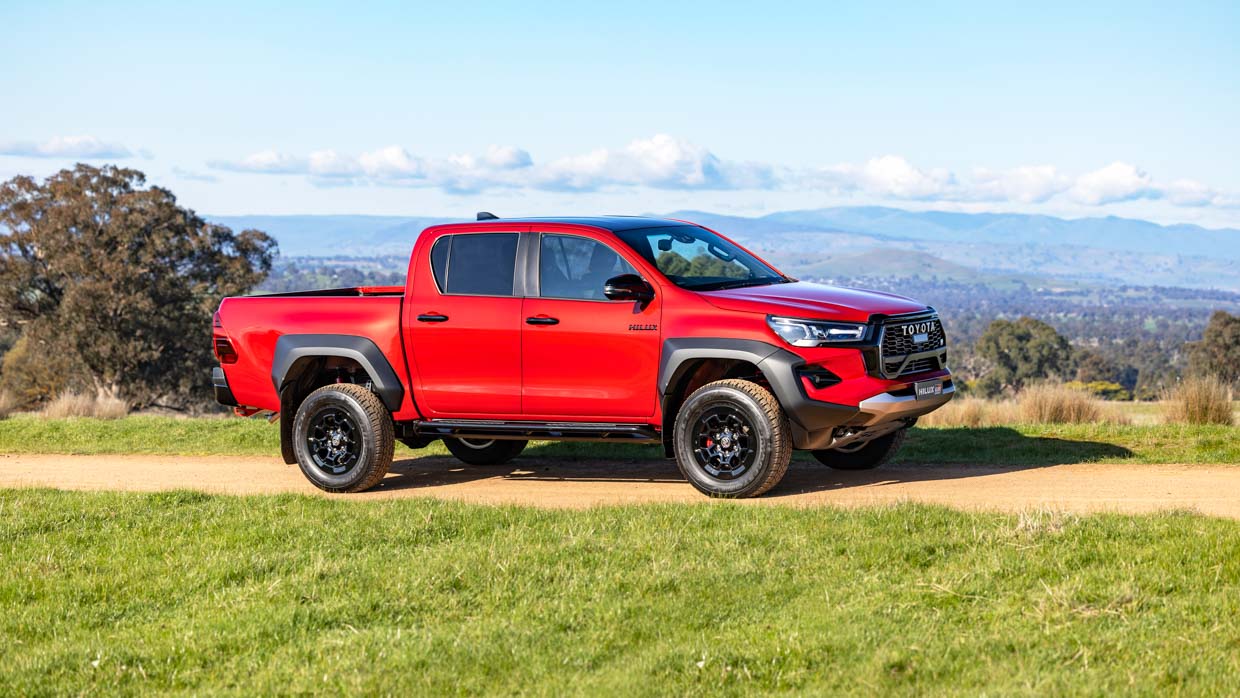
But for many Hilux fans there is simply no ‘other ute’, as punters embrace nameplates like sports teams, with the type of one-eyedness we haven’t seen since the Holden versus Ford days.
Toyota isn’t blind to this loyalty and, to the contrary, it’s embraced it, as local vice president of sales and marketing Sean Hanley laid out quite clearly to Chasing Cars.
“The idea of this vehicle was for it to sit neatly above the SR5 and give it a bit of power”.
“Our target audience is actually our [existing] customers on this vehicle”, he said – though he quickly added with a smile that he certainly wouldn’t turn down other buyers.

In a project spawned by Toyota Australia in 2018 to replace the Rugged X, the team looked to arguably the world’s toughest race where its multi-race winning GR Hilux was taking on the Dakar Rally and winning. The inspiration in both design and direction is evident.
The mantra of this project was to provide high-speed off-road and more sporty on-road performance without sacrificing towing, payload or reliability.
To achieve this, Toyota extracted 10 percent more grunt from the trusted 2.8-litre diesel four-cylinder, reworked the suspension and added KYB shocks – plus a litany of off-road upgrades like a front bash plate, rock sliders, a 15mm lift and chunkier tyres.
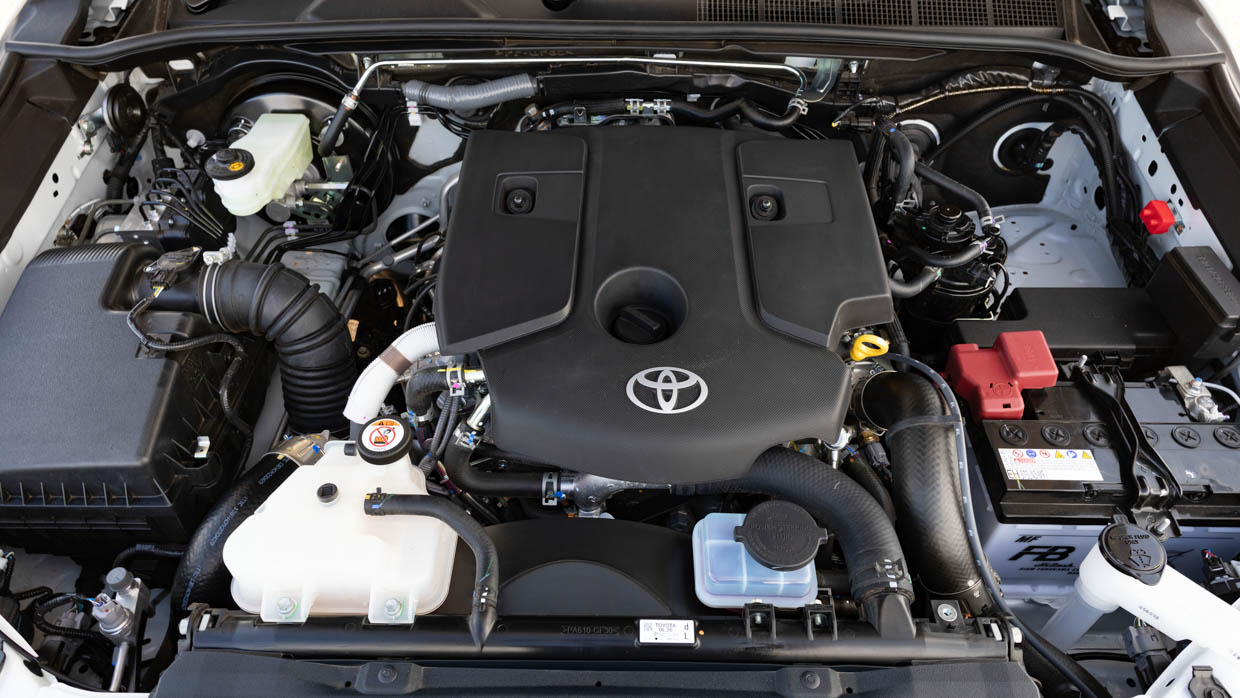
Other upgrades, such as four-wheel-disc brakes and wider track (+135mm front and +155mm rear), were also carried over to the more lifestyle-focused Rogue.
After putting in over 100,000km of testing, including across local punishing terrain like the Victorian High Country, the Hilux GR Sport will soon finally hit showrooms, with 1600 orders already placed and 3500 units due to land locally over the next 12 months.
Similar flagship variants, with locally developed off-road flare, have been seen before; think Walkinshaw’s strong-selling ‘W-Series’ first-gen Amarok utes and the aforementioned Hilux Rugged X.

But in 2023, the GR Sport is better matched with the Nissan Navara Pro-4X Warrior ($70,765) and the recently-released Ford Ranger Wildtrak X ($75,990), the former of which placed third in our dual-cab megatest back in 2022 and the latter earned praise in our recent review.
Tough competition, but the Hilux has always been up for a challenge.
The GR Sport is currently the flagship Hilux variant, so as you’d expect, it comes with a long list of features including:
Like most bog standard Hiluxes, the GR Sport comes with a selectable four-wheel-drive system and a locking rear differential.
While serious off-roaders will appreciate the plethora of underbody protection and suspension lift, it’s puzzling that the GR Hilux doesn’t come on some more serious tyres – not even as an option.
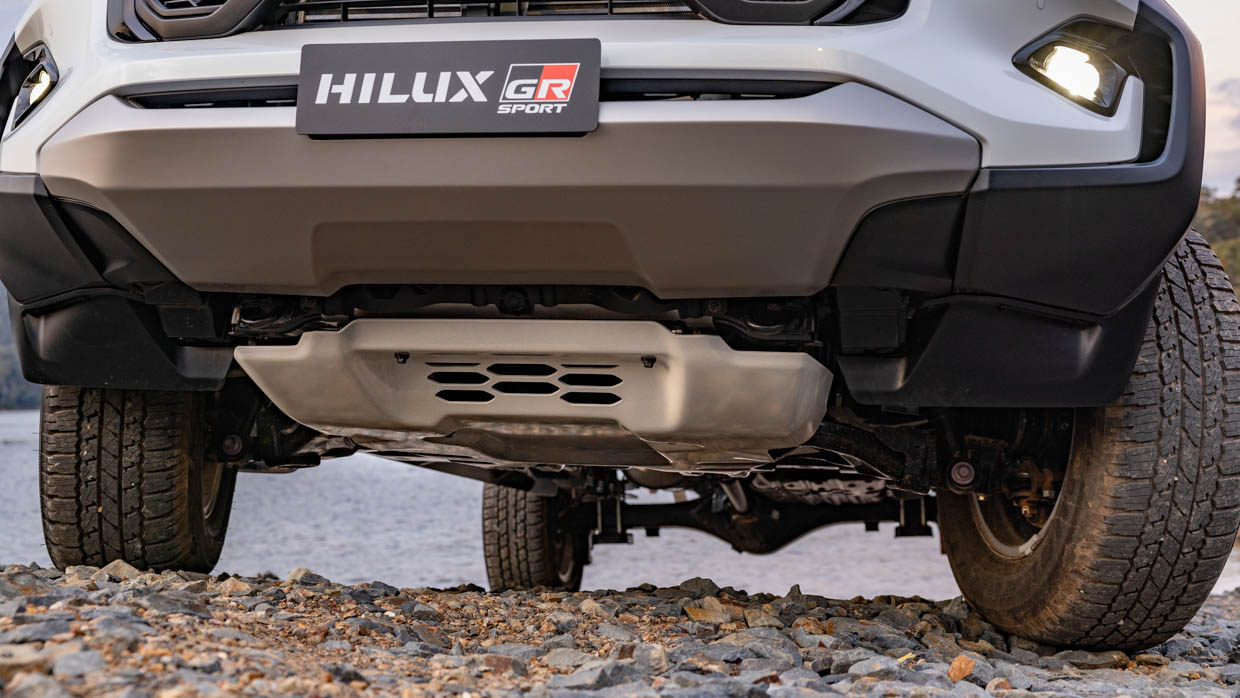
It would also be nice to see a locking front differential, a feature seen on the Land Cruiser 300 Series GR Sport and even the bargain-basement $52,990 driveaway GWM Cannon XSR.
While I’m not huge on roller covers myself, the fact it’s been stripped out from the Rogue and not available as a no-cost option is disappointing.
If you want recovery points at the front you’ll also need to option Toyota’s Genuine Accessory bullbar, which won’t come cheap.
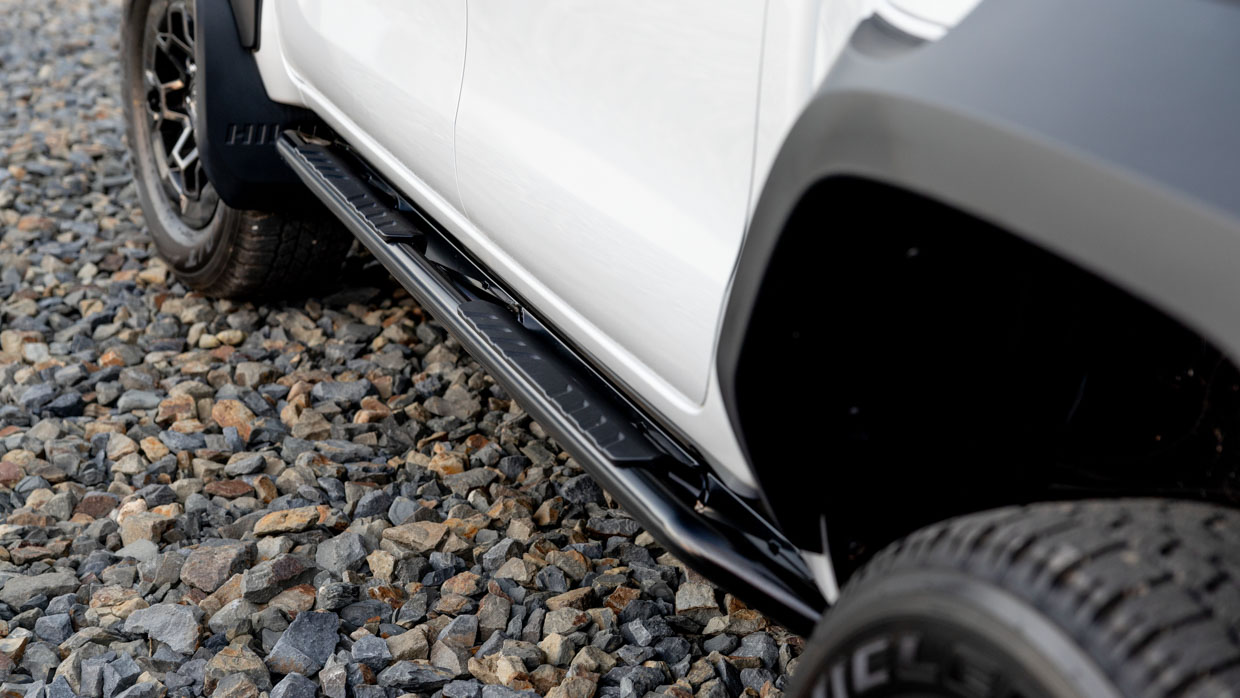
Even still, these choice off-road upgrades will certainly be enough for most people and won’t muck with your warranty, as aftermarket modifications can sometimes do.
Premium paint will set buyers back an additional $675 while opting for two-tone is an extra $1000.
Toyota’s pride for its new darling was shown off in full force by the very fact they were unafraid to show off every aspect of what it was built to do.
During our first drive with the Hilux GR Sport, we spent time on sealed roads, high(er)-speed dirt roads, while also navigating some technical off-road tracks and towing a 3.1-tonne caravan. The loud silence from Toyota here is that it offers a ute that can do it all, so are they correct?
Let’s start with on-road driving.
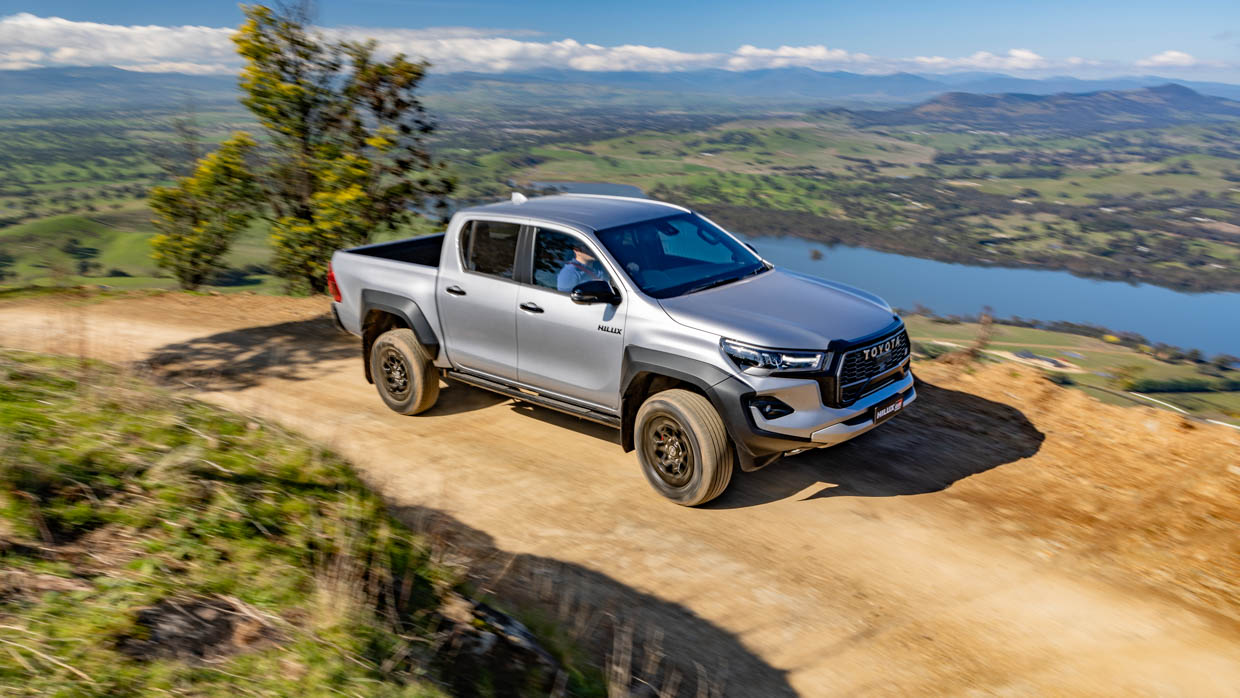
Even if you’re the most hardcore off-roader in the business you’ll be spending a lot of time here – that’s just how the Australian landscape works – and, unfortunately, the experience is a bit of a mixed bag.
The upgrade to the 165kW/550Nm tune in the 2.8-litre turbo-diesel engine is noticeable but not game-changing. The 150kW/500Nm setup found in other Hilux grades already felt adequate enough in an unladen ute.
Toyota says it’s also made sure the six-speed transmission is built to withstand the extra grunt and has retuned the ’box for snappier shifts, but it too was always a positive for the Hilux ute breed up until now.

Engineers have made some fairly significant changes to the suspension, with the front coils and rear leaf springs retuned and KYB monotube dampers fitted. The rear stabiliser bar has also been ditched to allow for greater articulation.
That last part certainly raised my eyebrows upon reading the spec sheet, but fear not, the Hilux has not turned into some wobbling death trap. In fact, handling wise it feels better than ever.
The wider track absolutely adds some stability to the chassis, providing a secure stance as you thread your way down a windy road, with the power sent to the rear-wheels only on the bitumen thanks to the selectable four-wheel-drive system.
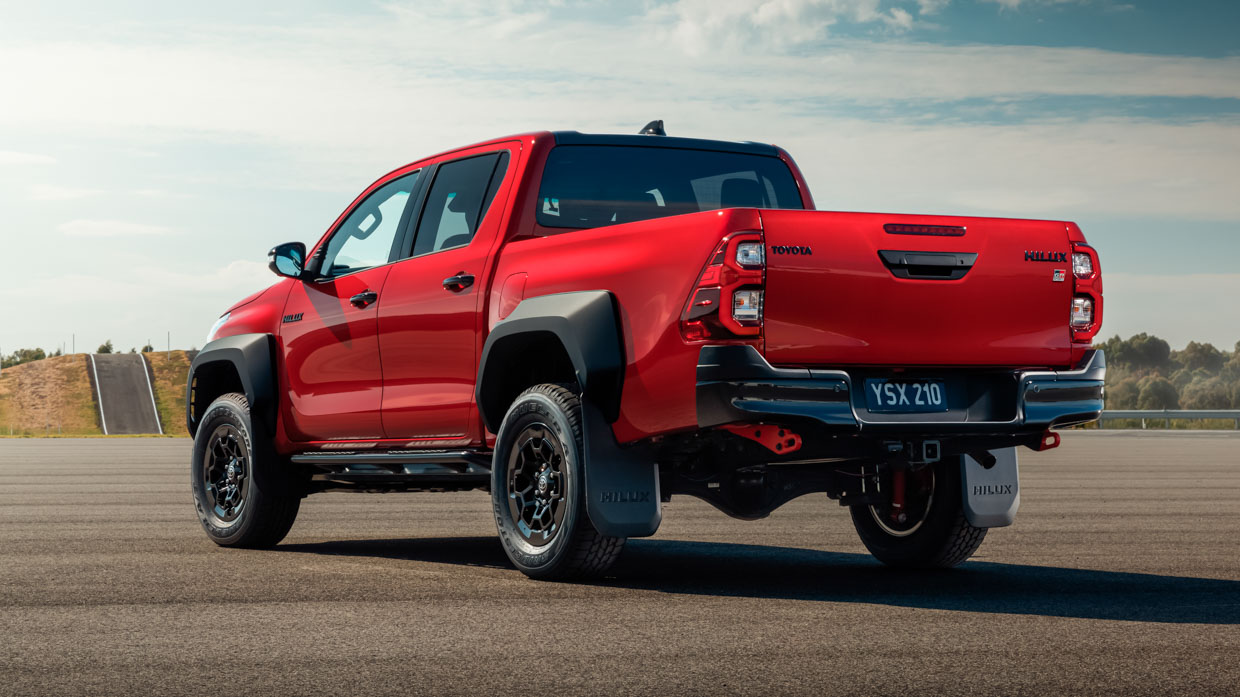
On sealed roads, the GR Sport can carry some pace through the bends but anything beyond seven-tenths on a country road is really not recommended.
The Hilux has a reputation for having an unforgiving ride, with deputy editor Curt Dupriez once summing it up as feeling “fierce”, and I do echo that sentiment.
Back to back, the GR Sport may be a slight improvement over models like the SR5 though one wasn’t available on our first drive. Still, the ride is an overly harsh experience and that only gets worse off-road.
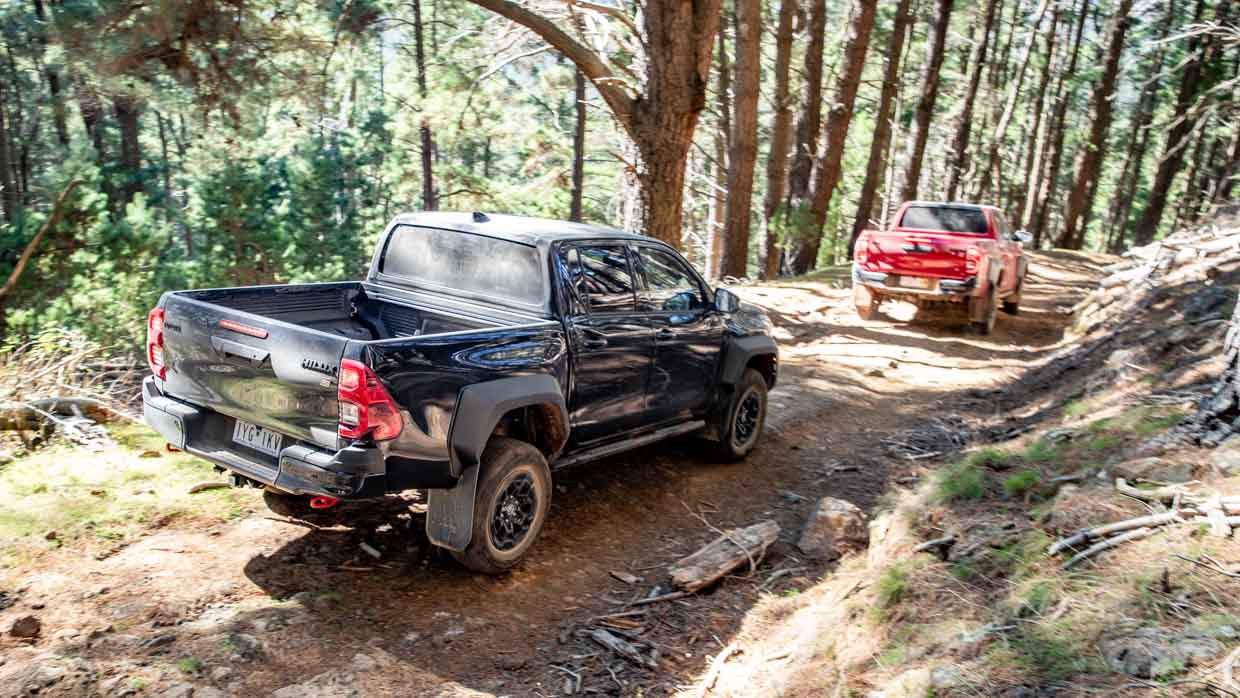
On dirt, the Hilux GR Sport begins to make more sense. Flick the driveline to four-wheel drive and Toyota’s Australian influence shines through. The Hilux’s well-tuned ESC combined with its wider stance provides a planted feel on the marble-like surface.
Even still, the ride is absolutely punishing and this isn’t just “how utes are” because some recent time behind the wheel of Ford Ranger Wildtrak in similar conditions provided a far more comfortable experience, leaf-springs and all.
But what about when things get slower, and more serious?
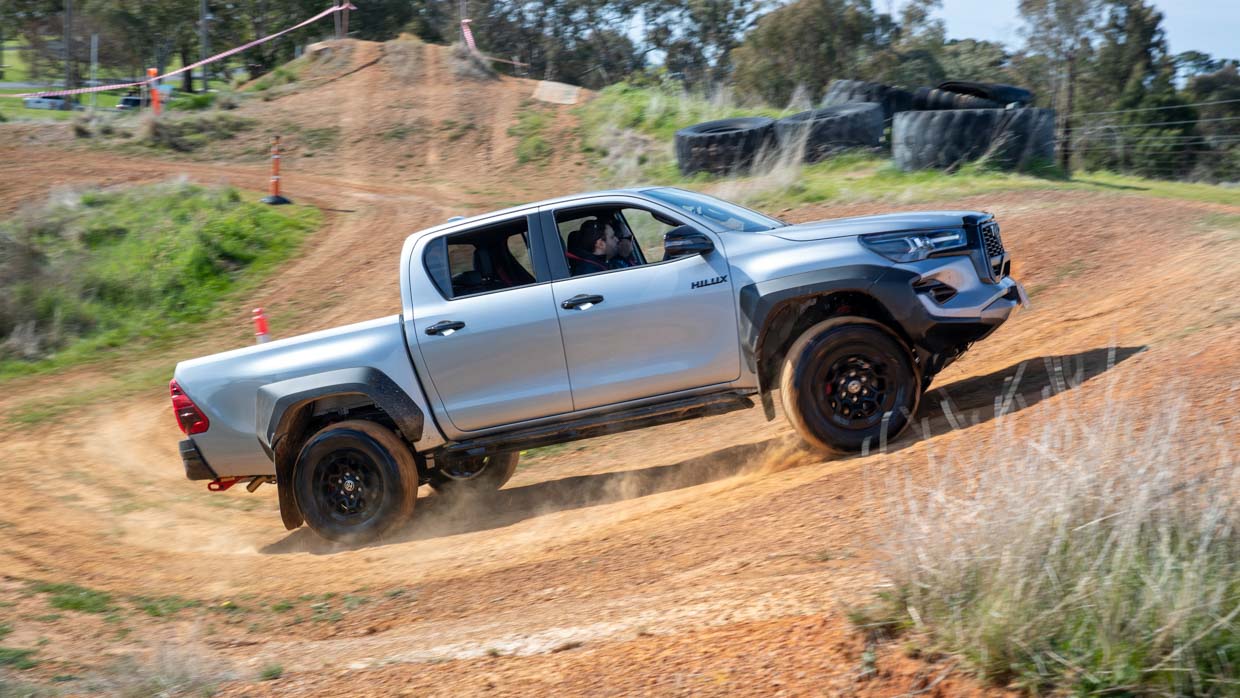
Toyota let us loose on a technical 4WD course, the kind filled with deep wombat holes, steep gradients and other chassis-scraping challenges.
Out of the box, a 4×4 Hilux is already an incredibly capable machine and it’s easy to see why people speak so highly of its traction control system, which quickly and efficiently shuffled torque to the appropriate wheel as the ute strolled out of some challenging obstacles.
So good was the traction control system in fact that I didn’t once make use of the rear differential lock, so perhaps the lack of a front-locker isn’t such a tragedy after all.
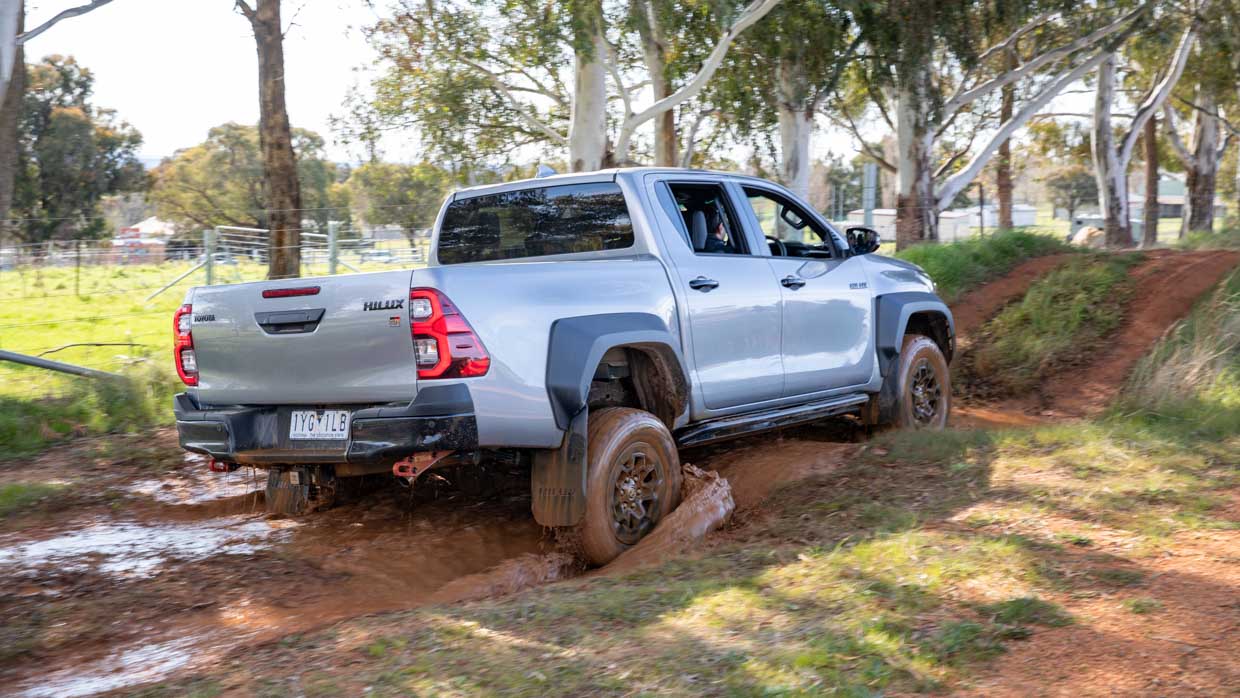

The suspension modifications have raised the height of the Hilux by 15mm, with the ground clearance quoted at 265mm – and remember you have those rock sliders if you find you need more.
Again, some more serious tyres would raise the limits of capability here, particularly in more inclement conditions than we had during our test, and it’s a shame Toyota doesn’t offer this as an option.
Finally, let’s talk about towing. A major point of difference between the Hilux GR Sport and a Ranger Raptor (aside from price) is that the former retains the 3.5-tonne towing capacity from the core model range, while the latter is restricted to 2.5.
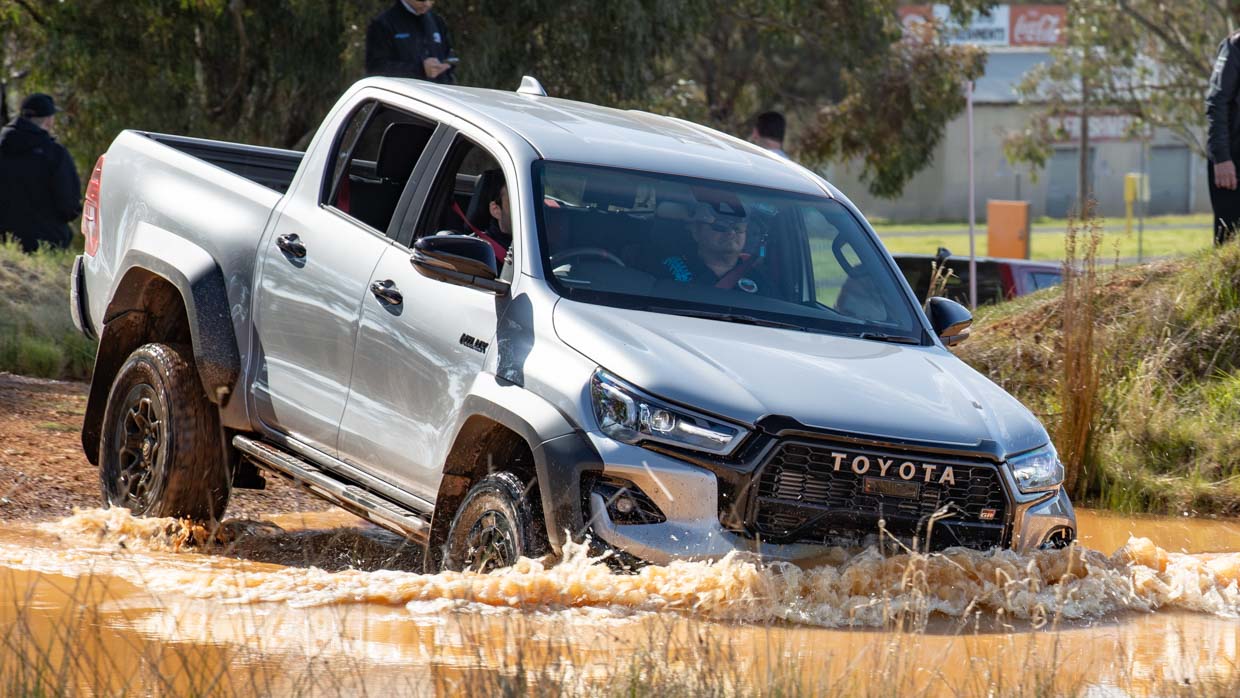
To demonstrate this capability, a 3.1-tonne caravan was hitched to the rear of the Hilux and four spare tyres were loaded into the tray, adding a weight of roughly 160kg.
Pulling the van from a dead stop was immediately impressive, with that extra 15kW/50Nm available from low in the rev range. The old 2.8L felt strong and controlled underfoot until I approached speeds of around 80 to 90km/h, where it began to run out of puff.
At these speeds, you can hear the Hilux working hard though, and rivals with larger-displacement V6 engines or twin-turbo setups offer more refinement and a better even power and torque distribution.

The wider track of the GR Sport seems to carry stability benefits here too, as the weight of the van felt well within the ute’s abilities during highway cornering and light cross-winds.
It’s also worth noting that, as is often the case with leaf-sprung utes, the added weight on the rear made the ride significantly more comfortable, it’s just a shame it can’t be like that all the time.
You’d be hard-pressed to find a person in this country who doesn’t know what the inside of a Hilux looks like and, for better or worse, it’s largely the same in the Gr Sport.
The driver’s seat has been reworked from the original design to add more bolstering and is trimmed in a combination of leather and suede. Both front seats are reasonably comfortable and that extra bolstering strikes a good balance between holding you into the seat and offering pleasant entry and egress.
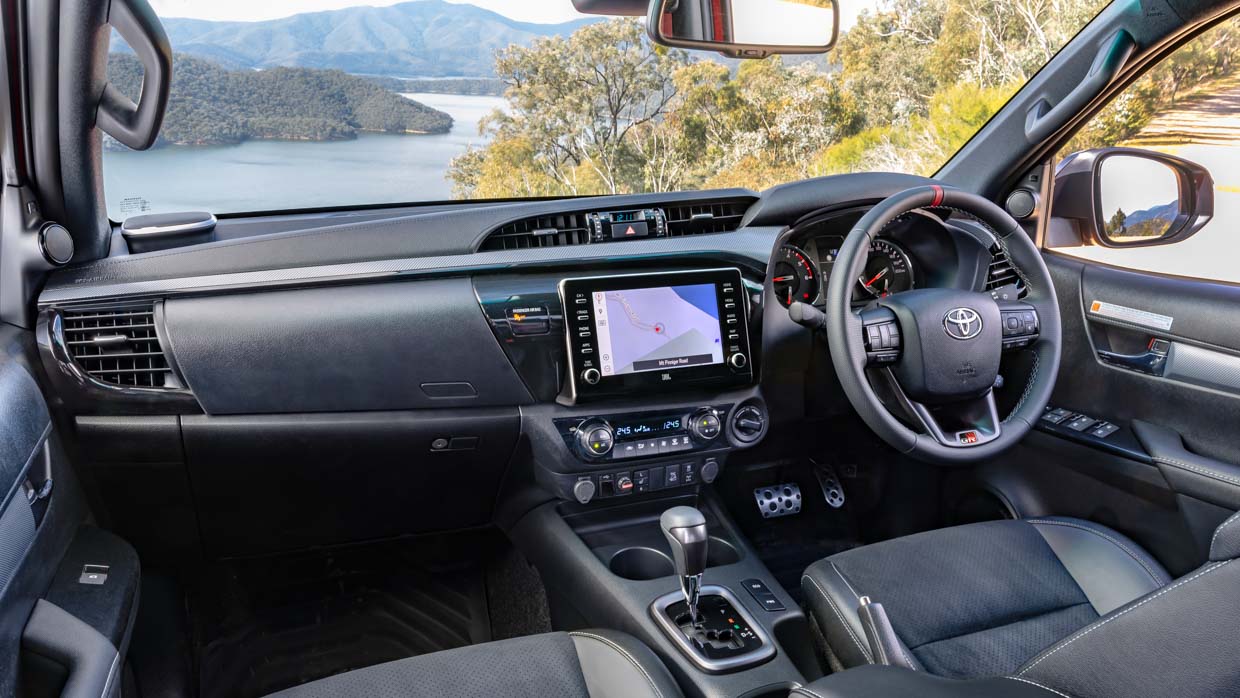
Single-stage seat heating is a benefit to both front occupants but, even in the range-topper, only the driver’s benefits from power adjustment.
The general switchgear inside a Hilux looks like it could be operated solely with a hammer, but that’s entirely the point, as each button and switch is designed to be abused and generally feels good to use.
The familiarity continues with the use of the same 8.0-inch touchscreen found elsewhere in the range, with the visual quality really starting to look old compared to current rivals – or iPhones from five years ago.
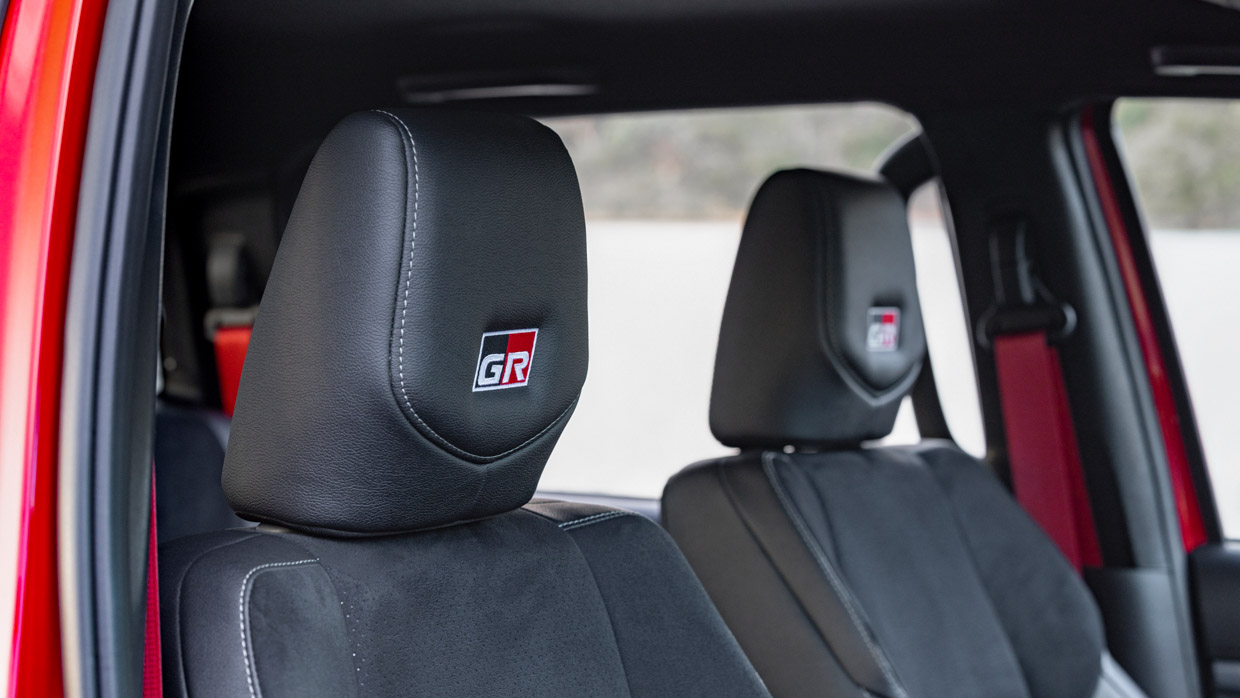
It makes the lack of a wireless phone charger less of an annoyance as the system still uses wired Apple CarPlay/Android Auto, so you’ll need to have your phone plugged in anyway.
The nine-speaker JBL sound system isn’t much better, along with their strong resemblance to a Bluetooth speaker stuck to the dashboard, they sound average at best, with a distinct lack of bass even when tuned to the maximum.

In the back seat it’s a typical midsize ute in that it’s neither very roomy nor overly cramped here. The bench seat is reasonably supportive and the view out is pretty good for six-footers.
It’s great to see air vents in the back, with the seats also capable of lifting up and hocking onto the headrests, and unlike the Ranger, the seats can be flipped up individually which helps with transporting large bags etc.
The Toyota Hilux range was rubber-stamped with its five-star ANCAP rating back in 2019, which is important to note as the testing criteria has become stricter since then.
However, it’s important to note that the GR Sport is not technically included under that rating, a habit of Toyota’s when it comes to GR products.
While I understand for vehicles like the GR Yaris and GR Corolla – which are typically very low in sales volume – it seems odd that Toyota wouldn’t look to expand the coverage to the Hilux GR Sport given that they plan to ship at least 3500 units here over the next 12 months.
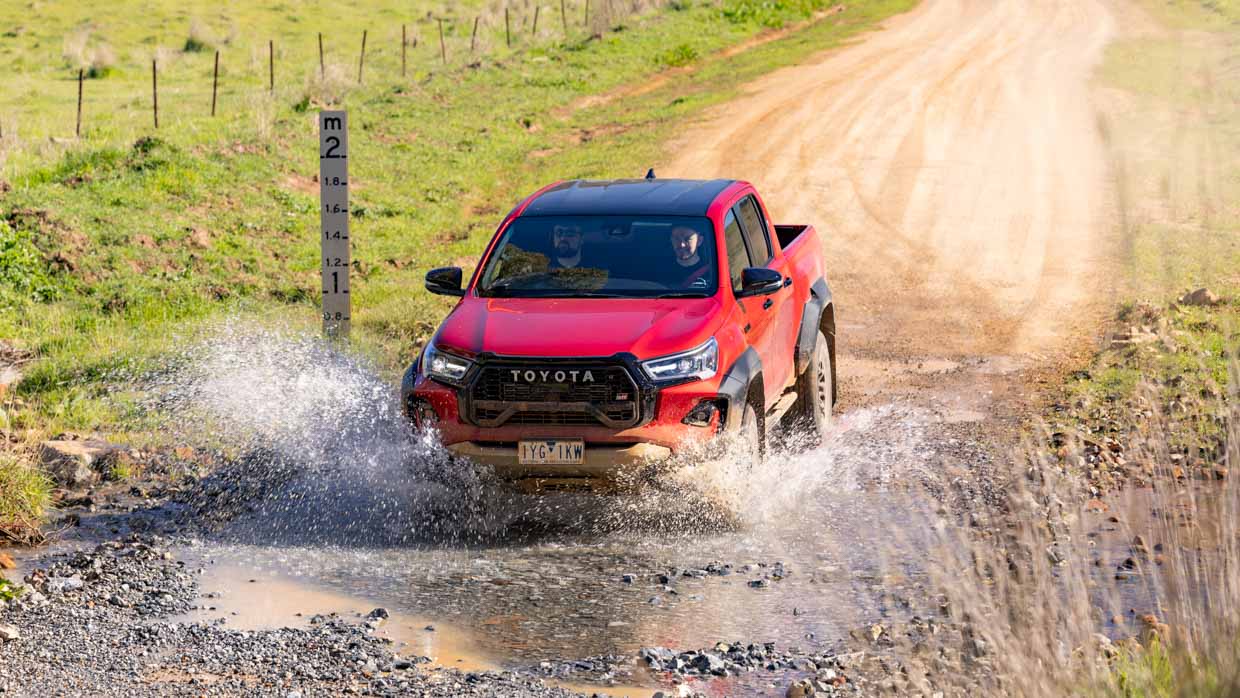
Still, the Hilux GR Sport features much of the same safety tech as the broader range, including advanced AEB with pedestrian and cyclist detection, a 360-degree camera, front and rear parking sensors and trailer sway control.
During our test, we found the adaptive cruise control, lane-keeping assistance and blind-spot monitoring all performed well.
So while it lacks a growing list of important safety features such as reversing AEB and a front-centre airbag, at least what remains performs well under pressure.
Like any ordinary Hilux SR5, the GR Sport will see buyers pay relatively little for every service but you’ll need to find yourself a friendly mechanic, because you’re going to be seeing them a lot.
That’s not a dig at the Hilux’s reliability, but rather at Toyota’s ultra-small servicing intervals of every six months or 10,000km. Capped price servicing is covered for the first three years, in which time you’ll pay $1740.
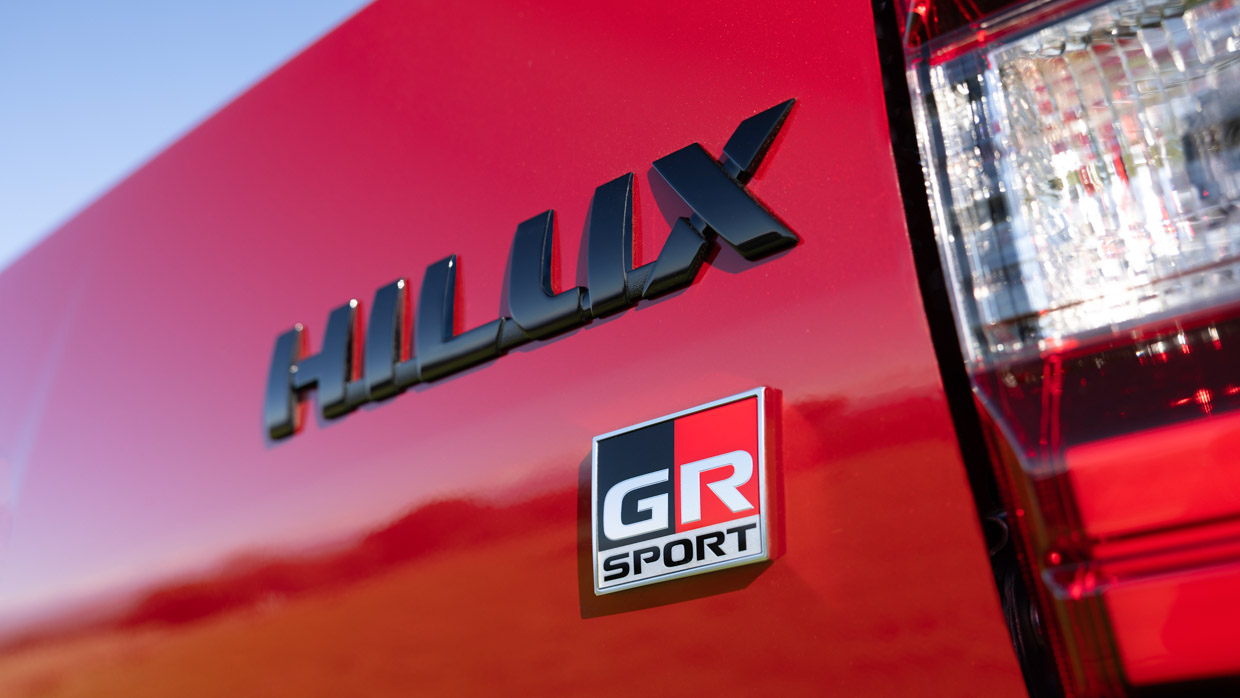
Warranty coverage is the industry-standard five years and unlimited kilometres.
Toyota says the Hilux GR Sport should see an average fuel consumption of 8.1L/100km, we saw closer to 10L/100km, though this was under fairly strenuous conditions.
You don’t build legacies without pushing the game forward, but you also don’t maintain them by sitting idly by, and Toyota knows this well.
The fact of the matter is the GR Sport is not a ‘true’ Ranger Raptor competitor, as it simply lacks the pace, but it’s also not trying to be. In fact, it lines up more neatly with the diesel twin-turbo Wildtrak X, and outpunches the Ford in outputs in the process.
While splashing nearly $80k driveaway on a new ute is a lot of cash, you can start to see the value equation add up when you consider that a run-of-the-mill SR5 4×4 dual cab will still cost around $63K driveaway before you add the GR Sport upgrades. It’s a premium easily bridged going the aftermarket route, even doing much of the labour yourself.
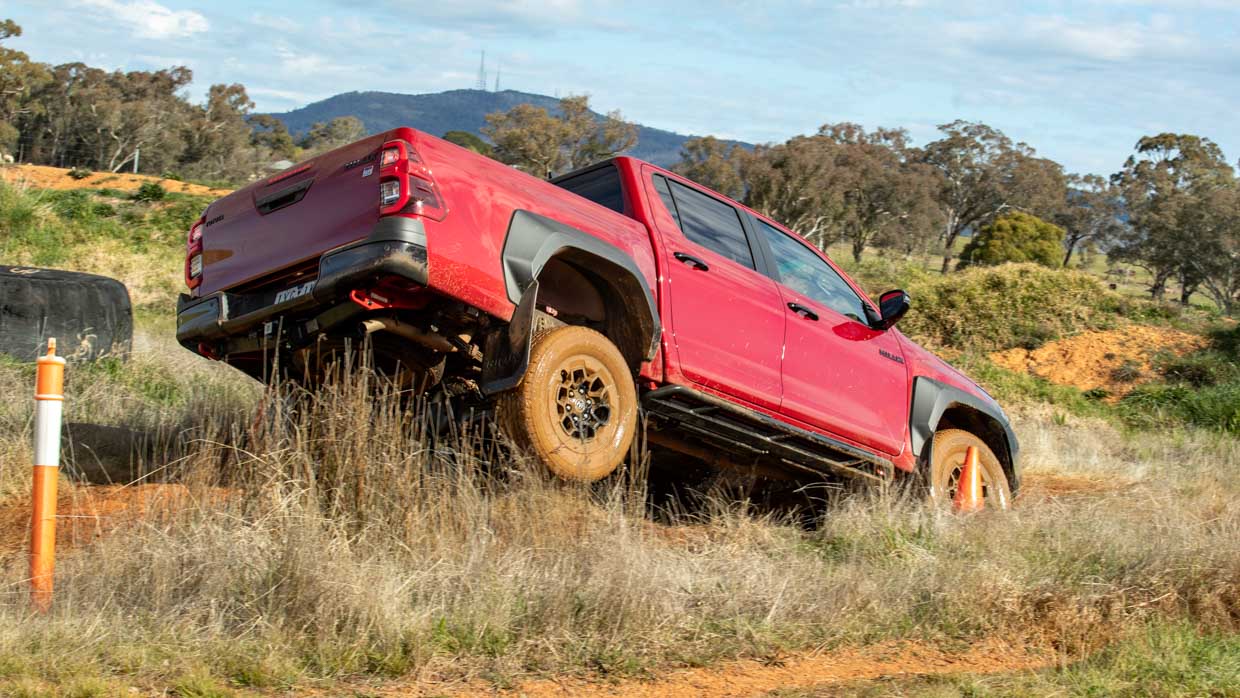
But, even still, for a GR-badged vehicle the lack of ambition is clear.
If the Hilux GR Sport is supposed to be the ultimate grade designed to take the harsh Aussie outback head-on, you have to wonder why features like an integrated bullbar, serious mud tyres and a front diff locker aren’t standard fitment.
Also, instead of simply removing the rear stabiliser bar, why not borrow technology from Toyota’s other hardcore off-roaders such as the Prado Kakadu and the 300 Series GR Sport and integrate KDSS that completely disconnects the sway bar on the fly, while also retaining better road holding without stiffening the ride…
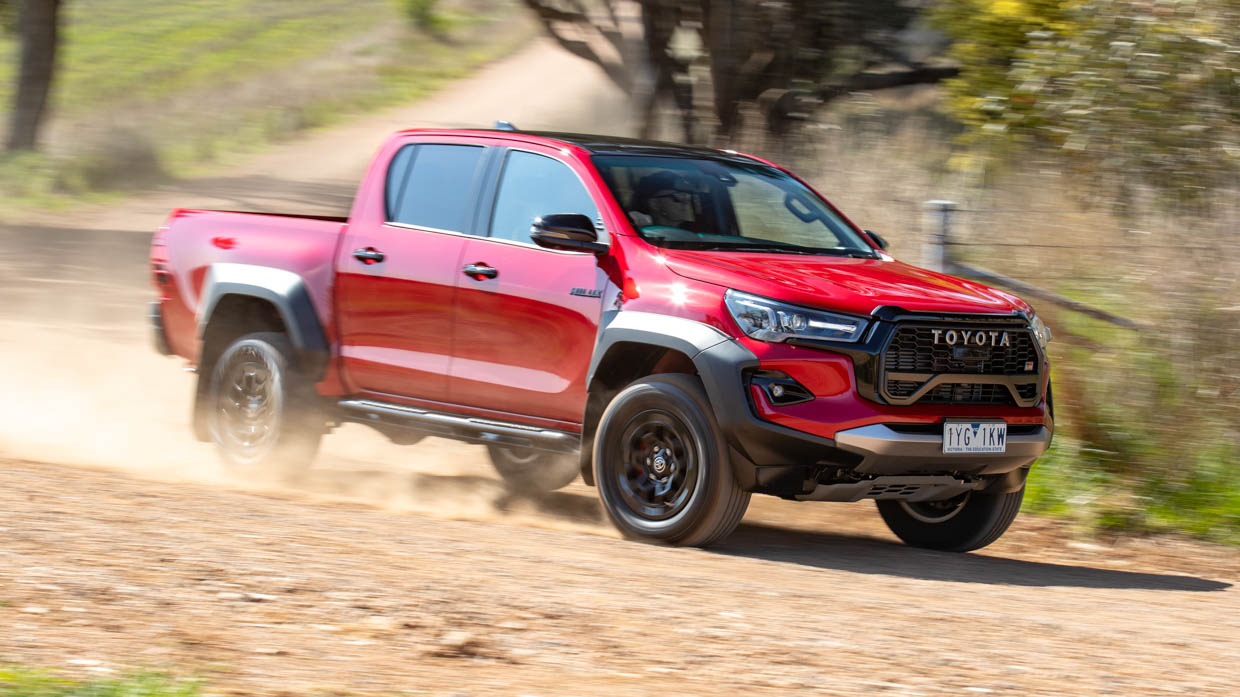
Toyota says it’s very possible we could see a full-fat GR in the future, though no such plans are currently in place. Perhaps a more ambitious variant will have to wait for a new-generation Hilux, armed with rear coil springs and a rapid hybrid powertrain…if the new US-market Tacoma is any sort of guide for the future Hilux.
If it was my money on the table, I’d opt for the more affordable and locally-developed Nissan Navara Pro-4X Warrior, which has significantly better ride quality for those longer interstate trips while still boasting tremendous off-road performance and a 3.5-tonne towing capacity – even if the tuned Hilux is the stronger puller.
But for those who only have eyes for this hard-working brutally honest ute, take confidence in the fact this GR Sport is the best Hilux yet.
Key specs (as tested)
About Chasing cars
Chasing Cars reviews are 100% independent.
Because we are powered by Budget Direct Insurance, we don’t receive advertising or sales revenue from car manufacturers.
We’re truly independent – giving you Australia’s best car reviews.
The estimate provided does not take into account your personal circumstances but is intended to give a general indication of the cost of insurance, in order to obtain a complete quote, please visit www.budgetdirect.com.au. Estimate includes 15%^ online discount.
^Conditions Apply
Budget Direct Insurance arranged by Auto & General Services Pty Ltd ACN 003 617 909(AGS) AFSL 241 411, for and on behalf of the insurer, Auto & General Insurance Company Limited(ABN 42 111 586 353, AFSL 285 571).Because we don’t know your financial needs, we can’t advise you if this insurance will suit you. You should consider your needs and the Product Disclosure Statement before making a decision to buy insurance. Terms and conditions apply.
Indicative quote based on assumptions including postcode , 40 year old male with no offences, licence suspensions or claims in the last 5 years, a NCD Rating 1 and no younger drivers listed. White car, driven up to 10,000kms a year, unfinanced, with no modifications, factory options and/or non-standard accessories, private use only and garaged at night.
^Online Discounts Terms & Conditions
1. Discounts apply to the premium paid for a new Budget Direct Gold Comprehensive Car Insurance, Third Party Property Only or Third Party Property, Fire & Theft Insurance policy initiated online on or after 29 March 2017. Discounts do not apply to optional Roadside Assistance.
2. Discounts do not apply to any renewal offer of insurance.
3. Discounts only apply to the insurance portion of the premium. Discounts are applied before government charges, taxes, levies and fees, including instalment processing fees (as applicable). The full extent of discounts may therefore be impacted.
4. We reserve the right to change the offer without notice.